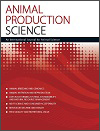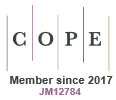AN25161Bovine respiratory disease in beef cattle under intensive and semi-intensive systems: a systematic review on the effects of nutritional supplementation
 , Marcio Nunes Corrêa, Eliza Rossi Komninou, Thais Casarin da Silva
, Marcio Nunes Corrêa, Eliza Rossi Komninou, Thais Casarin da Silva  , Uriel Secco Londero
, Uriel Secco Londero  , Francisco Augusto Burkert Del Pino and Viviane Rohrig Rabassa
, Francisco Augusto Burkert Del Pino and Viviane Rohrig Rabassa
This systematic review evaluates dietary supplements – probiotics, prebiotics, vitamins, and minerals – for preventing and controlling bovine respiratory disease (BRD), highlighting their potential to improve respiratory health and immune response in beef cattle under intensive and semi-intensive management.




